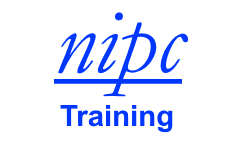 |
| Intellectual Property Office, Newport
Crown copyright
|
Jane Lambert
The slides and handouts for an online introduction to English patent law presented in 5 talks of approximately 45 minutes each.
Part 1 focuses on "The Basics". The key to understanding English patent law is that a patent represents a bargain with the public. There are several possible ways of rewarding innovation. In the old Soviet days when the state owned all means of production, distribution and exchange inventors received certificates that entitled them to certain benefits. In most countries including the UK inventors are given a temporary monopoly of the manufacture, importation, distribution or use of their invention in return for disclosing it to the world. The purpose of the monopoly is to give inventors or their successors an opportunity to recoup their investment in developing the invention and possibly earn a little bit extra as a reward. That bargain is reflected in the specification: the description or teaching being the inventor's side of the bargain and the claims or monopoly the public's.
Part 2 explores the sources of law, namely legislation and case law. In contrast to other areas of IP law, there has never been much EU law in patents. Instead, the patent laws of most European countries including the UK's are harmonized by the European Patent Convention which is a treaty that lies outside the EU framework. This module explores the Convention and the Patents Act 1977 in detail. It also considers the courts and tribunals that decide patents cases, primarily the Patents Court, the Intellectual Property Enterprise Court and the Intellectual Property Office hearing officers. Readers are introduced to the two main sets of law reports, the Reports of Patents Cases and the Fleet Street Reports.
Part 3 considers patentability, that is to say, the conditions for the grant of a patent. Novelty and the expression "the state of the art" are discussed. The Court of Appeal's test of novelty in General Tire & Rubber Co v Firestone Tyre & Rubber Co {1972] RPC 457 is considered. The meaning of "inventive step", "the person skilled in the art", "common general knowledge" and "obviousness" are explored. This module considers the exceptions in s.1 (2) and (3) and s.4A of the Patents Act and in particular the business method and computer programmes exclusions in s.1 (2) (c).
Part 4 discusses the procedure by which a patent can be sought from the IPO, a European patent designation the UK from the PO and applications under the Patent Cooperation Treaty, It also considers alternatives to patenting such as trade secrets or relying on unregistered designs right and copyright, costs and patent strategy.
The last part addresses infringement. Starting with s,60 and s,125 (1) of the Patents Act it considers what constitutes infringement in practice and the need for specificity in paragraph 4 of the Part 63 Practice Direction. In most infringement cases, the defendant attacks the validity of a patent on all the grounds set out in s.72 (1) of the Act. The construction or determining the precise meaning of a patent claim is crucial not just for deciding whether a claim has been infringed but also whether the claim is new or obvious. The case law on construction has evolved over the years and these materials chart the evolution from Catnic through Improver, Kirin-Amgen, Eli Lilly v Actavis and subsequent cases.
Though everybody is welcome to download and use my Powerpoint slides and PDF handouts they should be aware that they are no substitute for an oral presentation whether online or in a conference room. Slides and handouts contain markers and serve as aides memoire only. Should anybody wish to discuss this course or anything else in the article, he or she should call me on 020 7404 5252 or send me a message through my contact form.
